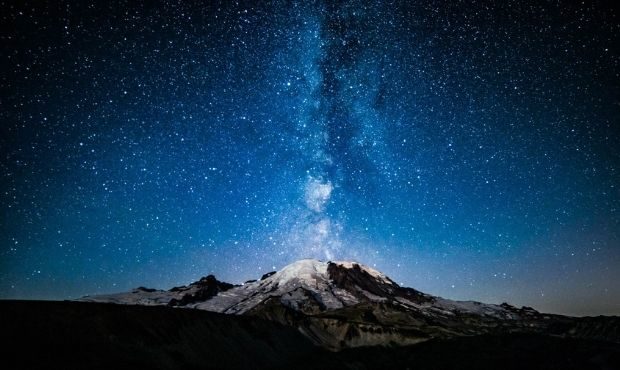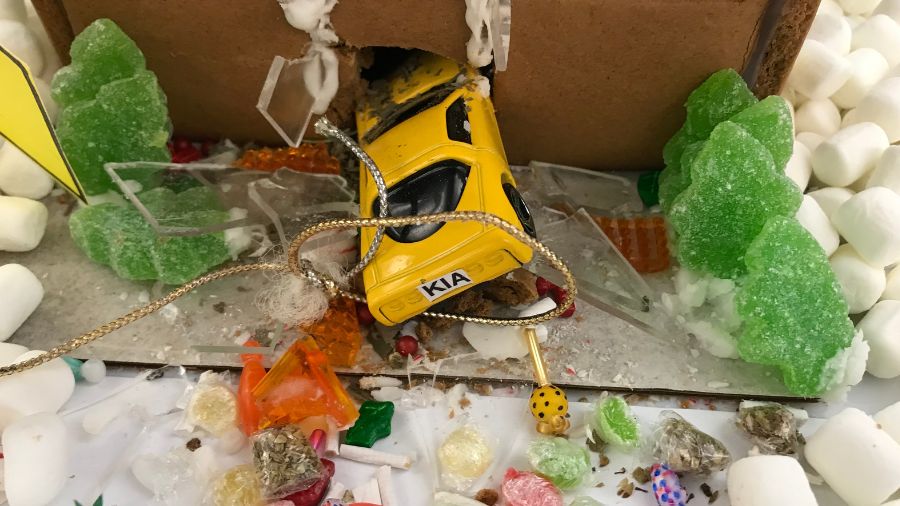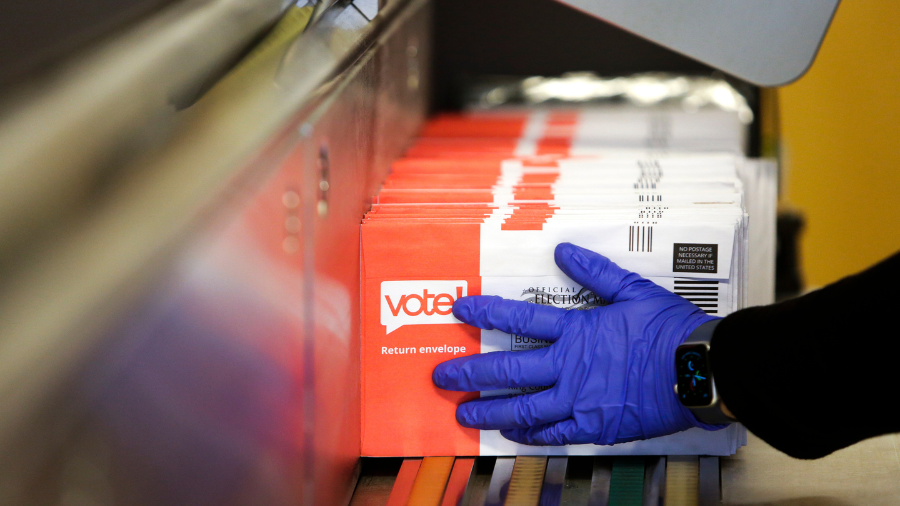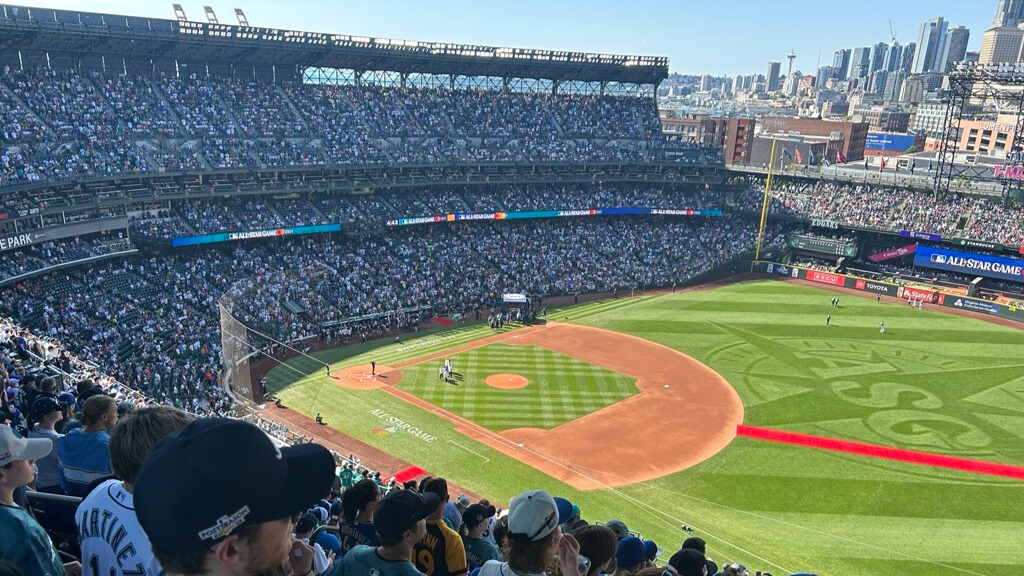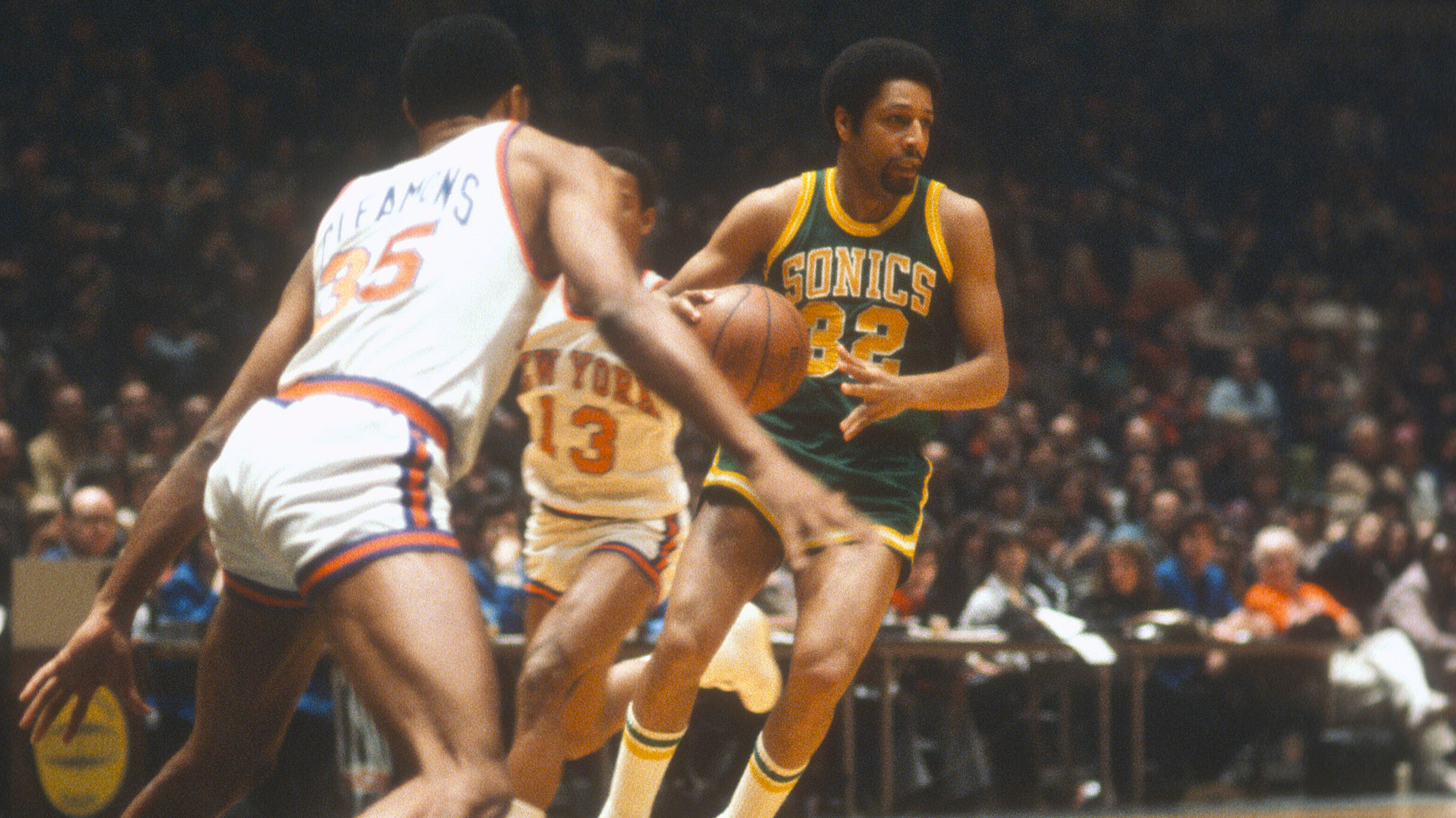Seismologist explains why a Nisqually-type earthquake is far more likely than ‘the Big One’
Mar 2, 2021, 8:49 AM | Updated: 10:59 am
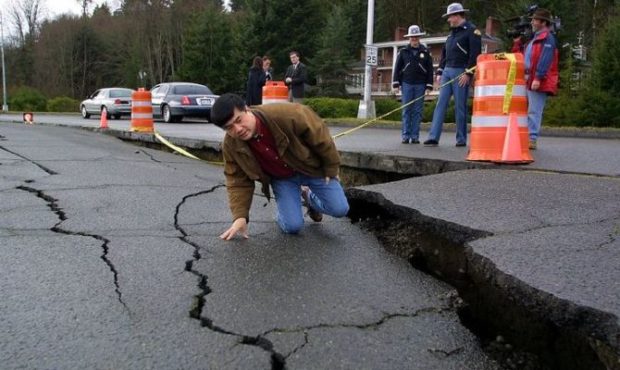
Then Washington Governor Gary Locke inspects a severe crack in Deschutes Parkway in Olympia after the magnitude 6.8 Nisqually quake in 2001. Worse damage is likely the next time the Cascadia fault ruptures off the Pacific coast. (AP archive photo by Lauren McFalls)
(AP archive photo by Lauren McFalls)
Last week, Washington Emergency Management posted a warning to Twitter, saying that “there is an 84% chance we will have a Nisqually-style 6.8 earthquake hit Western Washington, like what happened 20 years ago this month.”
Video: Remembering the Nisqually earthquake 20 years later
After a flood of concerned replies where many interpreted that to mean there’s a frighteningly significant likelihood that a large quake is highly probable any day now, Pacific Northwest Seismic Network seismologist Bill Steele spoke to MyNorthwest to put minds at ease, and provide some added context behind that statistic.
To start, Steele acknowledged that there is an 84% chance Western Washington will experience a Nisqually-style 6.8 earthquake … in the next 50 years.
That prediction is based on a trio of large, deep earthquakes the region has seen over the last 72 years: a magnitude 7.1 in 1949 in roughly the same place as the Nisqually quake; a 6.5 in 1965 located further north; and then the aforementioned 6.8 Nisqually quake in 2001.
“Those contribute something to that estimate, where it looks like every 20 to 30 years on average we’re getting another big earthquake from that deep source,” Steele described.
Earthquakes in that category typically occur deep beneath the Earth, going as deep as 2,500 kilometers underground. That makes them difficult to trace further back in our region’s history given the lack of advanced instrumentation in the early 1900s, but recent data appears to dependably establish that 20 to 30-year recurrence timeline over the last 70-plus years.
In terms of the damage a Nisqually-type quake can do, Steele points out that 2001’s iteration was largely regarded as “a threshold-type event.”
“Things were really about to fail in many different cases, and I talked to the engineers at night when they came in after reconnaissance, with them saying, ‘if there was like one more cycle we would have really been in trouble,'” he detailed. “Some emergency managers called it a fender bender earthquake, where it hit everybody to a degree, but nobody hard enough to really engender big change.”
And while he says the state “has a long way to go” in fully reinforcing and retrofitting its buildings for the next earthquake, he also believes “we may have time” to fully realize that goal within the next decade.
In terms of fears surrounding a larger magnitude 9.0 Pacific Northwest mega-quake known to occur every 500 years, Steele also cautions against assuming the worst.
“There’s a tendency of people to really do the worst case scenario kind of thing,” he noted. “I keep hearing it’s overdue — it’s not overdue. We’re 321 years into the cycle.”
Past data indicates that four of the last seven such earthquakes in the Northwest occurred within a 200 to 400 year time window. Based on that, Steele estimates that there’s a 15% chance a 9.0 quake hits the Northwest in the next 50 years.
Check out MyNorthwest’s earthquake tracker here
That’s also not to say it’s anything close to a guarantee, he clarifies.
“We could have one of these things tomorrow, but it wouldn’t surprise us as geophysicists at all if it was 200 years before we have another one,” he said. “A 15% chance in 50 years is significant, but a long way from a sure thing.”
In the meantime, there are plenty of things you can do to ensure you and your loved ones are prepared when an earthquake does arrive, whether it’s a Nisqually-type quake, the Big One, or something in between. That includes mapping out a disaster plan, preparing kits stocked with water and non-perishable foods, and even making kits for pets containing 2-3 days of their food, medication, leashes, and cages if necessary.
You can take a look at the state’s full guide on how to prepare here.

